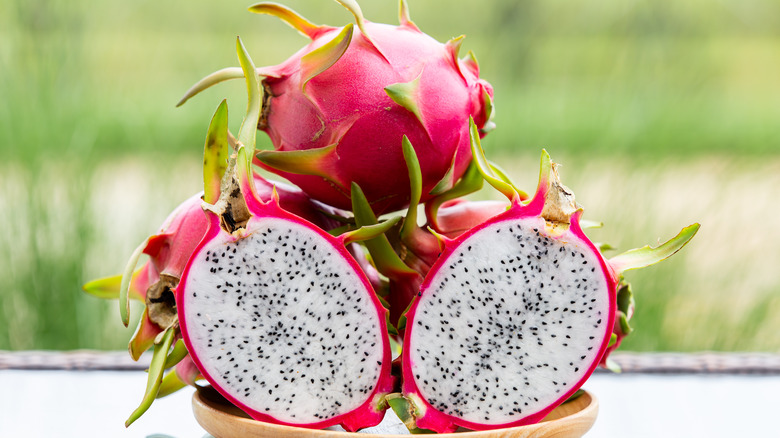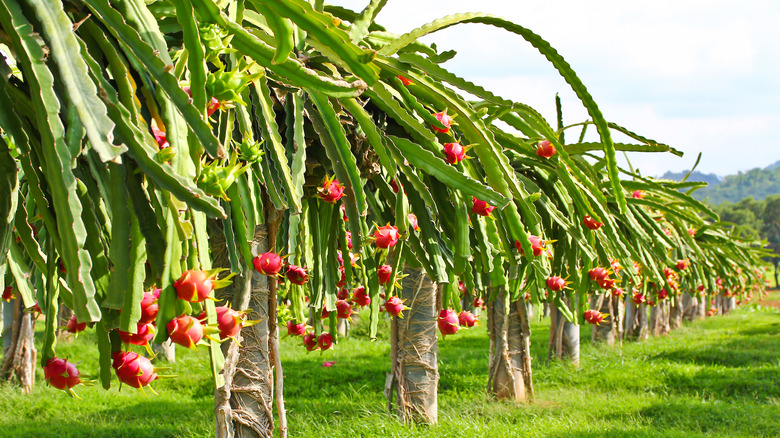Why A Massive Surge In Dragon Fruit Spells Trouble For Some Farmers
If ever the term "pretty in pink" rings true for an edible plant, it's in the wildly flamboyant hues of the tropical dragon fruit. Also known as pitaya, the outer skins scream "fun" with vibrant hot-pink tones, while the edible inner flesh is just as striking. Depending on the type of dragon fruit, it opens to reveal either white or magenta flesh punctuated by deep black dots, explains KOR Shots. A less common version widens the color chart to include vivid yellow skins.
With such attention-grabbing features, it's no surprise that dragon fruit is gaining steam in culinary circles, even appearing in drinks at Starbucks and Taco Bell, according to The New York Times. And it's not just a pretty face. Dragon fruit harbors a wealth of vitamins, minerals, and healthy plant compounds as well as dietary fiber and antioxidants to fight against inflammation and cell damage in your body, notes Brooks Tropical. It also helps with gut health and daily needs for iron and magnesium.
It's a fruit worthy of the attention it draws on supermarket shelves or when crowning salads, cocktails, and smoothies. You can also scoop it out for fresh-fruit snacking or freeze it for a slushy dessert. The playful, flavor-packed fruit is a no-brainer for creative eaters, but despite its growing popularity, U.S. dragon fruit farmers report some alarming issues.
Climate and competition
According to The New York Times, dragon fruit typically enjoys a rich American harvest from June through November. Yet, in Florida, a primary warm-climate farming location, growers and distributors report a flood of dragon fruit from South America, particularly Ecuador. Farmers are making pennies on the dollar for the expensive retail-level fruit, leading some to shutter operations and sell trees or land. The new assault of competition results from converging factors.
Fruit distributor Brooks Tropical tells The New York Times that dragon fruit from Ecuador comprises a large inventory share due to reliable supply and the extended Ecuadorean growing season of eight months, including winter and spring. Attempts by American farmers to extend their season requires artificial sunlight, prohibitory costs, and constant care. The pandemic also contributed to labor shortages affecting the supply chain, leaving U.S. farms holding the short end of the stick.
Climate weighs in as well, with drought in South Florida affecting supply and quality. The lack of water results in smaller, less-enticing dragon fruit than South American competitors, and the cost of extra watering affects profits and prices. For example, charts posted by the USDA in September 2022 reveal dragon fruit comparisons for 10-pound boxes of red-flesh varieties. Those grown in California show prices between $71 and $72, while the same fruit from Nicaragua weighs in at $54 to $55.
Dragon fruit popularity may be here to stay, but sourcing from American farms remains a question mark in the world of fresh produce.

